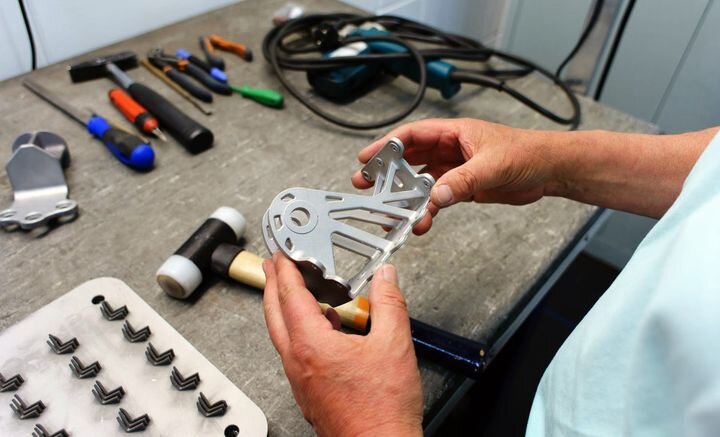![3D Hubs’ 2020 Trends report is available [Source: 3D Hubs]](https://fabbaloo.com/wp-content/uploads/2020/05/3d-hubs-trends-2020_img_5eb08b8f5f2f3.jpg)
I’m looking at the just-released 3D Hubs report, and it’s very different from their previous reports.
3D Hubs Trends Report
The Amsterdam-based company has made it a habit to release a “Trends Report” periodically. Originally this was done quarterly, but more recently it’s changed to an annual release.
The report used to provide significant details on the company’s transactional activity. I found this data extremely interesting because it was perhaps the only way to get a peek at the worldwide distribution of desktop 3D printers. One could easily identify the most popular and promising devices by perusing the quarterly 3D Hubs Trends report.
However, things are much different now.
3D Hubs Pivot
In the interim 3D Hubs has dramatically switched strategies. They originated in 2013 as an online service focused on connecting individuals to nearby personal 3D printer operators who could run off a 3D printer for them. 3D Hubs’ network of such machines grew quite large, but it turned out this business model was not profitable in the end.
3D Hubs then pivoted their business towards industry. Instead of attaching individual desktop 3D printer operators to their network, they recruited larger commercial operations with spare industrial 3D printing capacity. This significantly broadened the network’s ability to address more professional 3D printing needs. And thus they were able to switch their business from consumers to industry in rather short order.
But this meant their internal transactional statistics no longer reflected the use of the desktop equipment, which formed a large and interesting portion of their periodic trends reports. Today they’re releasing the first version of the report that seems to be entirely based on their new business model.
The new report largely investigates the activities in 3D printing during 2019 for the industry as a whole, and these sections are based on a number of external industry and publicly available media reports.
3D Hubs Data
The most interesting bits in the report to me are the data from 3D Hubs itself, as usual. However, there is dramatically less information presented than in previous reports. The information can tell us something about 3D Hubs is progressing, which is especially interesting due to their recent business pivot. Anecdotally, we’ve heard they are doing very well and are now profitable.
But what do the numbers say? Here are some highlights:
3D Hubs produced 550,000 parts for requestors during 2019. That’s a significant number of parts. Remember, though, that 3D Hubs does not operate their own equipment, but instead is routing requests to network participants, and their business model is to collect a small fee for each transaction that takes place over their network.
It seems that the majority of 3D Hubs’ client activity is taking place in the West, with some 95% of transactions in North America and Western Europe. There is also a significant amount of activity in Australia, but smaller numbers in other industrialized countries such as Argentina, India, Japan and so on. What I gather from this is that 3D Hubs’ focus on industry corresponds with countries of significant industrial activity. However, there could perhaps be more activity in India and China.
3D Hubs also provides a breakdown by major industry sector of the request types they’ve received. As one might expect from their new focus, the largest category, at 31% is “Industrial”. However, the second-largest category is “Electrical”, at 21%. This is quite interesting and suggests there must be either a peculiar situation where occasional electrical parts are required by many parties, or perhaps 3D Hubs has a large client in that area.
Two-thirds of 3D Hubs’ parts printed are intended for prototyping, at least based on the type of material requested. Meanwhile, 25% of their parts are made from engineering plastics, which suggests production use. This is a significant number, indicating production use of 3D printed parts is increasing.
If you’re interested in reading the full report from 3D Hubs, hit the link below.
Via 3D Hubs

